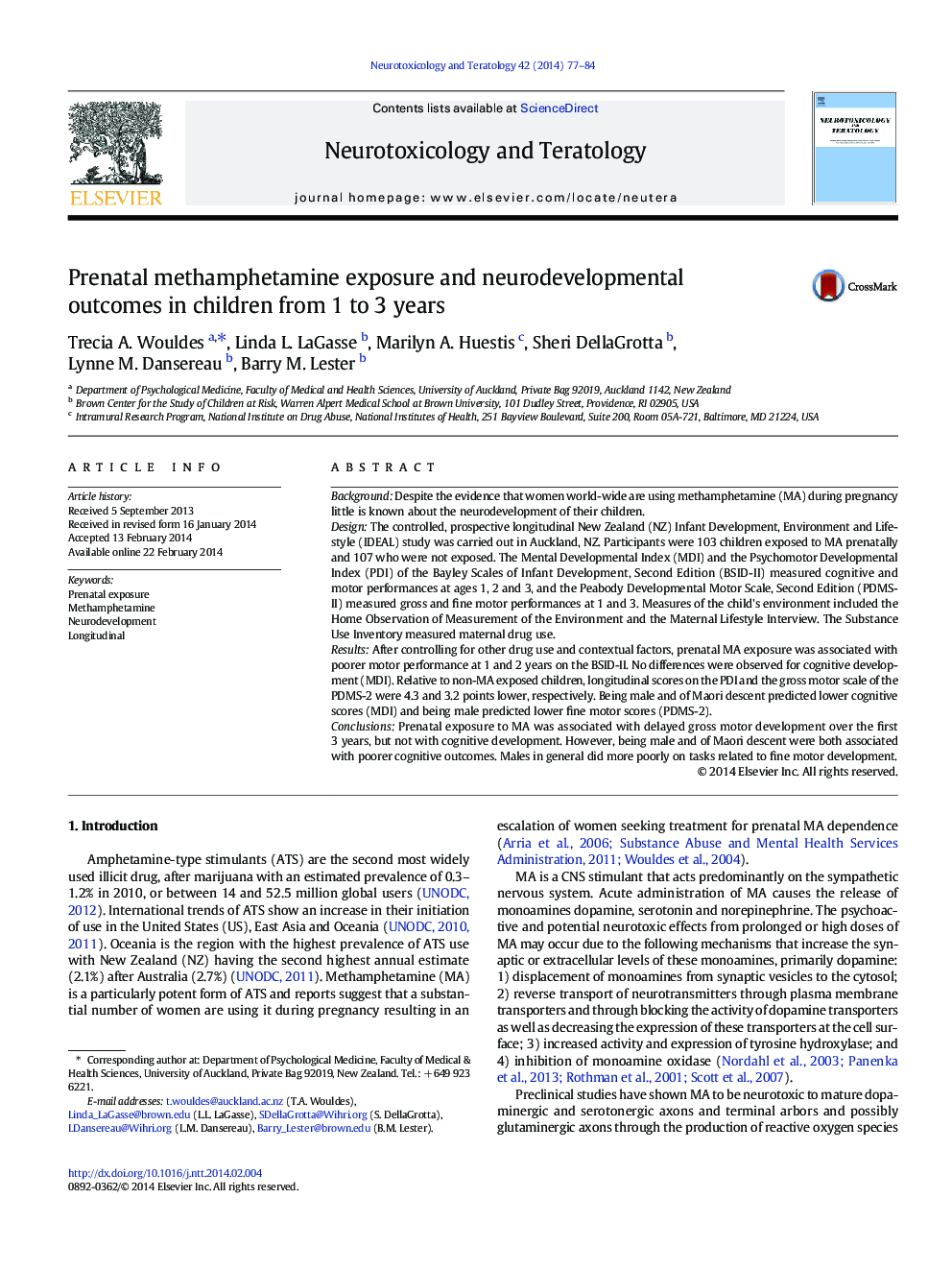| کد مقاله | کد نشریه | سال انتشار | مقاله انگلیسی | نسخه تمام متن |
|---|---|---|---|---|
| 2591145 | 1562093 | 2014 | 8 صفحه PDF | دانلود رایگان |
• Longitudinal study of early neurodevelopment in New Zealand children exposed prenatally to methamphetamine
• Methamphetamine exposure was associated with lower motor scores on two standardized measures of motor development.
• No significant association was found between methamphetamine exposure and cognitive outcomes.
• Males of Maori descent performed more poorly on cognitive tasks, and males in general on fine motor tasks.
BackgroundDespite the evidence that women world-wide are using methamphetamine (MA) during pregnancy little is known about the neurodevelopment of their children.DesignThe controlled, prospective longitudinal New Zealand (NZ) Infant Development, Environment and Lifestyle (IDEAL) study was carried out in Auckland, NZ. Participants were 103 children exposed to MA prenatally and 107 who were not exposed. The Mental Developmental Index (MDI) and the Psychomotor Developmental Index (PDI) of the Bayley Scales of Infant Development, Second Edition (BSID-II) measured cognitive and motor performances at ages 1, 2 and 3, and the Peabody Developmental Motor Scale, Second Edition (PDMS-II) measured gross and fine motor performances at 1 and 3. Measures of the child's environment included the Home Observation of Measurement of the Environment and the Maternal Lifestyle Interview. The Substance Use Inventory measured maternal drug use.ResultsAfter controlling for other drug use and contextual factors, prenatal MA exposure was associated with poorer motor performance at 1 and 2 years on the BSID-II. No differences were observed for cognitive development (MDI). Relative to non-MA exposed children, longitudinal scores on the PDI and the gross motor scale of the PDMS-2 were 4.3 and 3.2 points lower, respectively. Being male and of Maori descent predicted lower cognitive scores (MDI) and being male predicted lower fine motor scores (PDMS-2).ConclusionsPrenatal exposure to MA was associated with delayed gross motor development over the first 3 years, but not with cognitive development. However, being male and of Maori descent were both associated with poorer cognitive outcomes. Males in general did more poorly on tasks related to fine motor development.
Journal: Neurotoxicology and Teratology - Volume 42, March–April 2014, Pages 77–84
